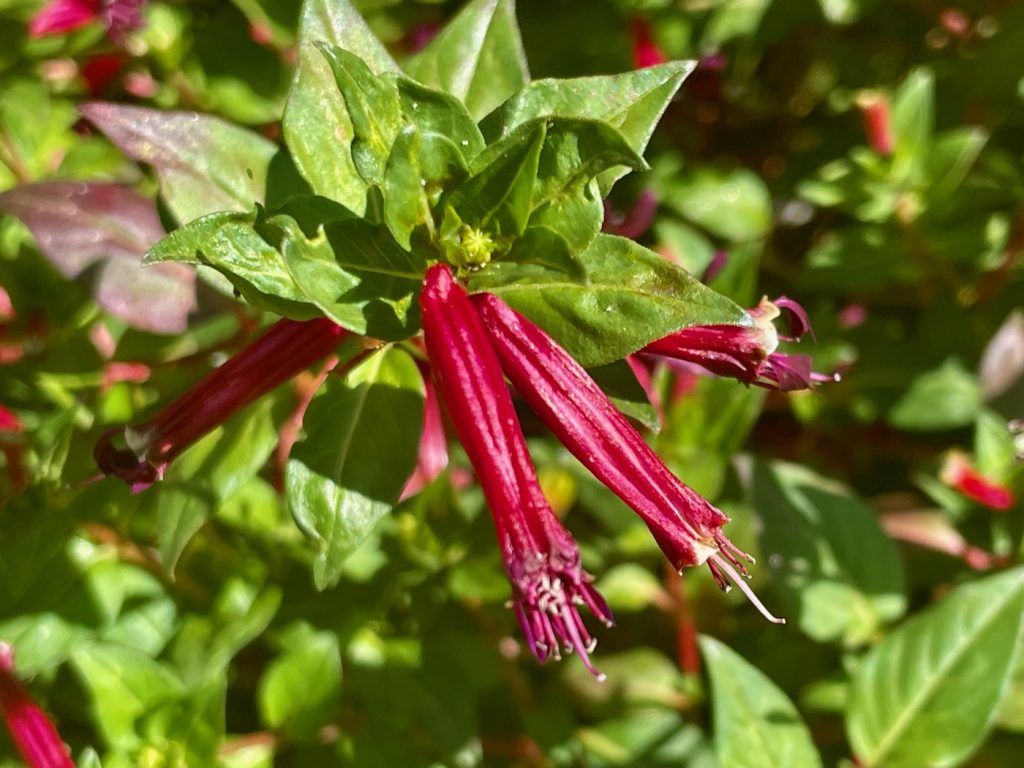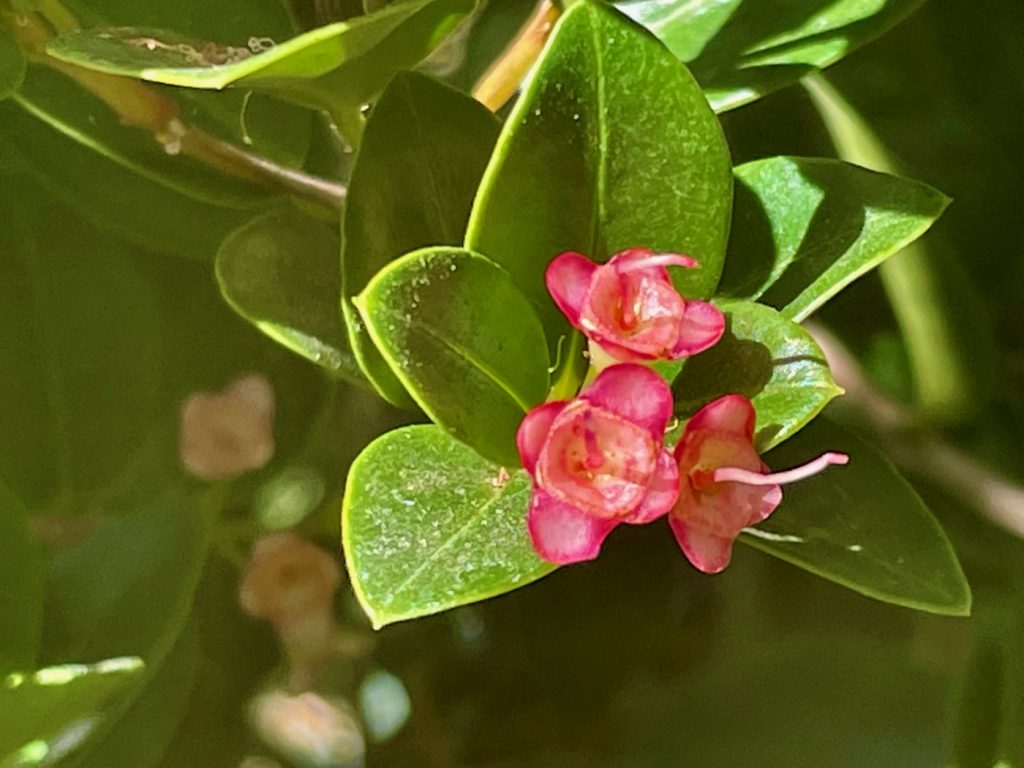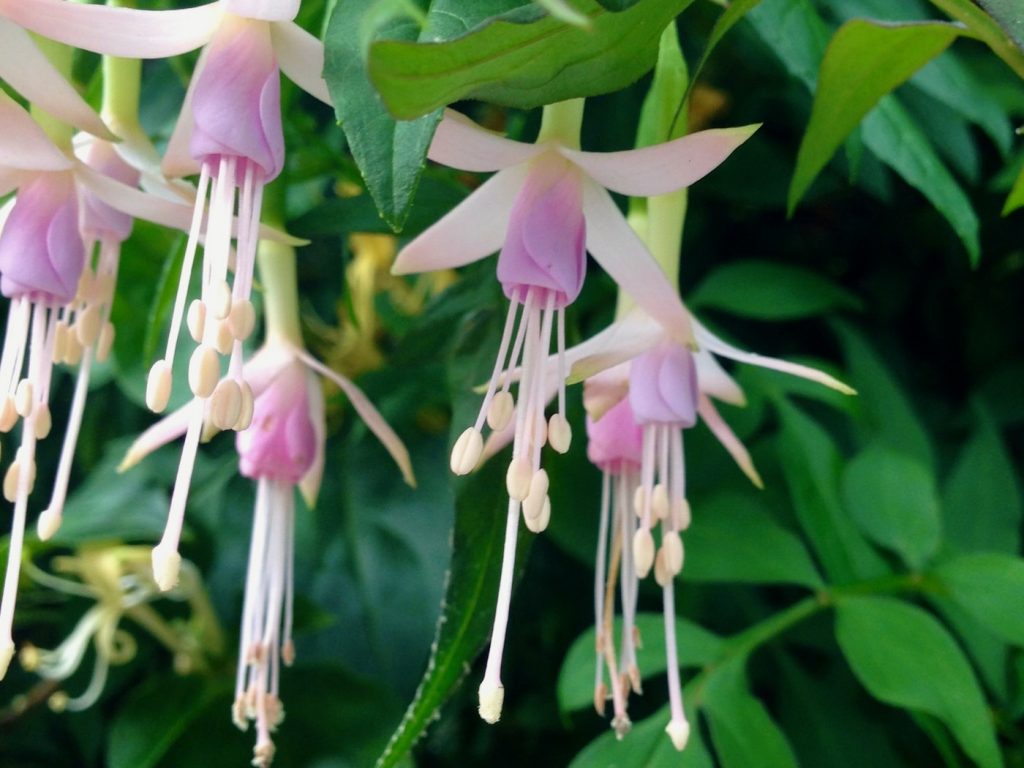Cuphea llavea, commonly known as the Bat Flower, Bat-faced Cuphea, Cuphea, or Red Cuphea, is an evergreen sub-shrub belonging to the Lythraceae family. Native to Mexico, this plant gets its name from the Greek word “kyphos,” meaning curved, which refers to the shape of its flowers.
Cuphea llavea typically reaches a height of around 30 inches or 75 centimeters. It features ovate and hairy dark green foliage with pointed leaves. From late spring until the end of autumn, it produces unique tubular flowers that resemble bats. These flowers have a purple calyx and a pair of red semi-circular petals, creating an intriguing and distinctive appearance.
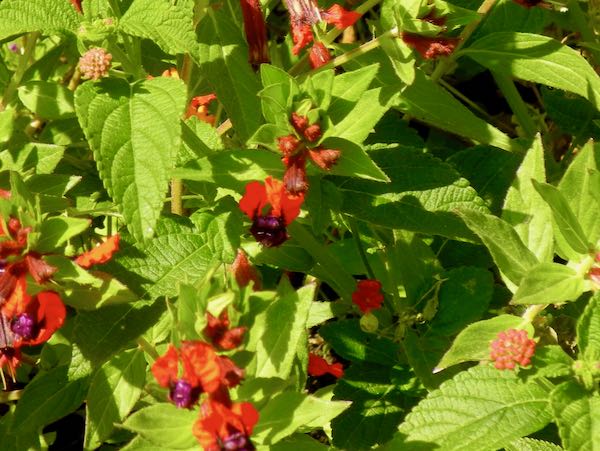
If you’re interested in growing Cuphea llavea, here are some care tips to consider:
Light Requirements: Plant Cuphea llavea in full sun or light shade. It thrives in bright conditions and can tolerate some shade, although it may bloom less profusely in shadier locations.
Soil Type: This plant prefers average, moist, and well-drained soil. It benefits from soil that retains some moisture but is not overly saturated. Ensure the soil has good drainage to prevent waterlogging.
Outdoor vs. Indoor Cultivation: Cuphea llavea is suitable for outdoor cultivation in temperate climates. However, it can also be grown as a houseplant in regions with colder or less favorable conditions.
Pruning: Pinching the tips of Cuphea llavea will help promote bushier growth and a more compact form. Regular pruning can be done to maintain its shape and size.
Heat and Drought Tolerance: Cuphea llavea is a fast-growing plant that can tolerate heat and slightly dry conditions. However, providing regular watering during dry periods will help keep it healthy and thriving.
Annual Planting: In colder climates where Cuphea llavea is not winter hardy, it is often grown as an annual. Planting new specimens each year ensures continuous blooms and vibrant foliage.
Deadheading: Unlike some flowering plants, Cuphea llavea does not require deadheading (removing spent flowers). Its flowers naturally drop off when they are spent.
Fertilization: To support its growth and blooming potential, fertilize Cuphea llavea during the growing season. Choose a balanced, slow-release fertilizer or use a liquid fertilizer diluted according to the manufacturer’s instructions.
Propagation: Cuphea llavea can be propagated through tip cuttings. Take cuttings from healthy stems, remove the lower leaves, and plant them in a well-draining rooting medium. Keep the cuttings in a warm and humid environment until they develop roots.
By following these care guidelines, you can enjoy the unique and captivating beauty of Cuphea llavea, whether as an outdoor plant or a delightful addition to your indoor collection.
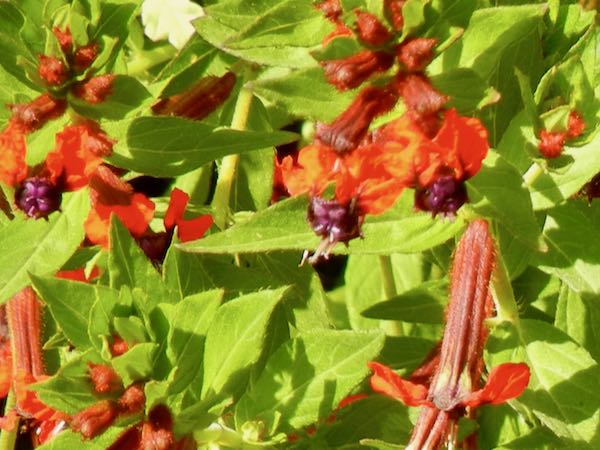
Also, read about Cuphea ‘Starfire Pink’ or Cuphea caeciliae or Cigar Plant

